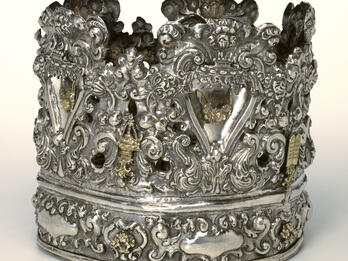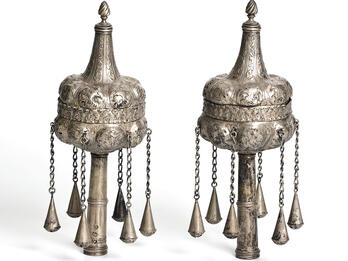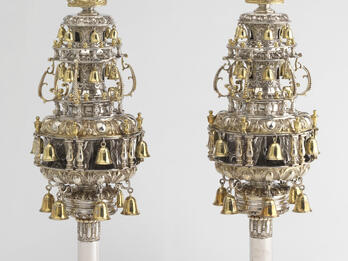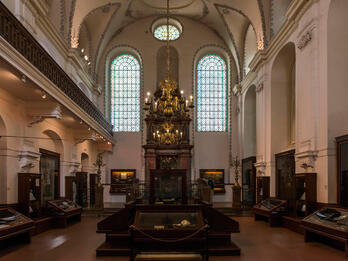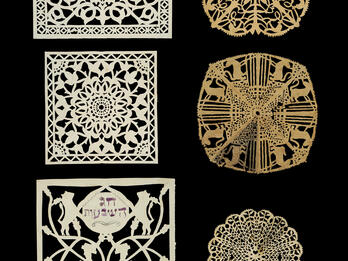Showing Results 1 - 6 of 6
Restricted
Image
This silver Torah crown from Padua, Italy, is decorated with images of the tablets of law, incense utensils, the ark of the covenant,
and the headdress of the high priest.
Contributor:
Artist Unknown
Places:
Padua, Venice (Padua, Italy)
Date:
17th–18th Century
Subjects:
Categories:
Restricted
Image
These silver Torah finials are from Corfu and were made between the seventeenth and eighteenth centuries, by an artist whose initials were A.Z. They were used in the Scuola Greca Synagogue, which…
Contributor:
A.Z.
Places:
Kérkyra (Corfu), Ottoman Empire (Corfu, Greece)
Date:
Late 17th–Early 18th Century
Subjects:
Categories:
Restricted
Image
These richly decorated Torah finials (rimonim), cast in silver and partly gilt, and adorned with many bells and topped with crowns, were created in London. The non-Jewish silversmith William Spackman…
Contributor:
William Spackman
Places:
London, Great Britain (London, United Kingdom)
Date:
1719
Subjects:
Categories:
Restricted
Image
The Klausen Synagogue in Prague gets its name from the kloyz (a complex of buildings used for religious purposes, including synagogues) that originally stood on its site, erected in the 1570s. The…
Contributor:
Artist Unknown
Places:
Prague, Holy Roman Empire (Prague, Czech Republic)
Date:
17th Century
Subjects:
Categories:
Restricted
Image
This partially gilt-silver Torah crown from Poland is studded with semi-precious stones. Its two-tiered base is typical of Torah crowns from Eastern Europe. It is inscribed in Hebrew with the words,…
Contributor:
Artist Unknown
Places:
Polish-Lithuanian Commonwealth (Poland)
Date:
1729
Subjects:
Categories:
Restricted
Image
Paper cuts were a distinctive Jewish folk art in Eastern Europe, where rural Poles and Ukrainians also practiced the craft. Jewish paper cuts had their own techniques and imagery and were used for…
Date:
Late 19th Century


